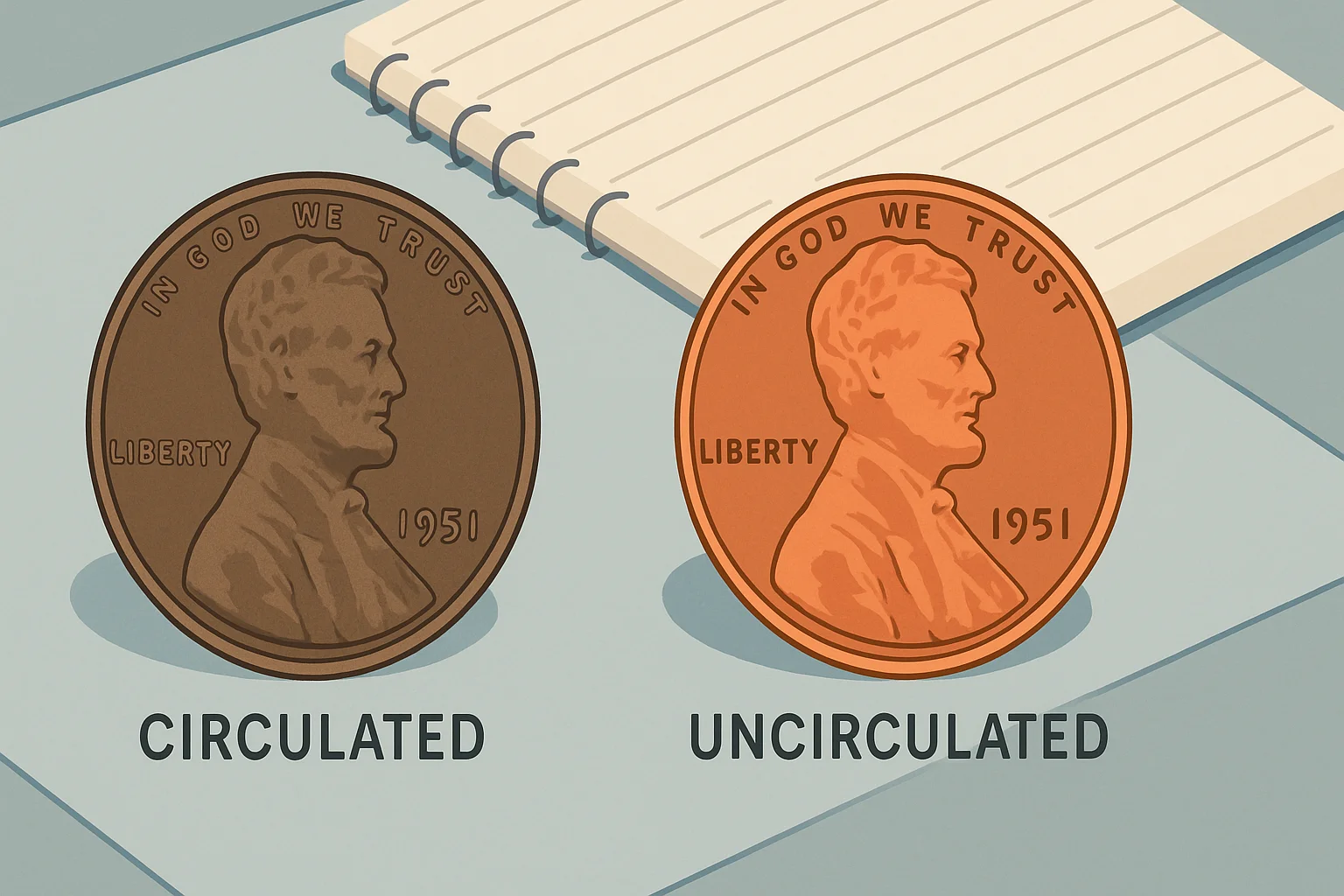What You Should Know about 1951 Penny as a Coin Lover
The 1951 Wheat penny might seem like just another copper coin from the mid-20th century, but it carries a strong appeal for collectors. Its connection to post-World War II America, wide mint production, and variety of conditions make it an excellent study piece for anyone starting or expanding their numismatic journey. Understanding how to evaluate this coin—by history, mint marks, and condition—helps determine its true collectible value.

History of the 1951 Penny
The 1951 penny belongs to the famous Lincoln Wheat cent series, minted from 1909 to 1958. These coins are instantly recognizable by Abraham Lincoln’s portrait on the obverse and two wheat stalks framing the reverse.
Composition: 95% copper, 5% tin and zinc.
Designer: Victor David Brenner.
Minting Context: The early 1950s marked a period of economic recovery and growth in the U.S. The penny, being one of the most widely used coins, reflected both utility and tradition.
In 1951, pennies were minted in three locations:
Philadelphia (no mint mark) – the largest production.
Denver (D) – a strong second in output.
San Francisco (S) – smaller mintages, often prized in higher grades.
Although the coin was produced in high numbers, collectors prize original red examples, proof strikes, and certain San Francisco issues for their scarcity in superior condition.
Key Factors Affecting 1951 Penny Value
While millions of 1951 Wheat pennies were minted, not all are equal in value. Collectors consider several elements when evaluating this coin.
1. Mint Mark
The mint location makes a noticeable difference in demand and pricing:
Philadelphia (no mint mark): Most common, values stay modest except in top grades.
Denver (D): A larger production run, but higher premiums for coins in Mint State.
San Francisco (S): Less common in higher uncirculated grades, giving them added appeal.
2. Condition (Grade)
Condition is one of the strongest factors in valuation. Collectors use terms like:
Circulated: Worn with dull surfaces; lowest value.
About Uncirculated (AU): Light wear with sharp details remaining.
Mint State (MS60+): No signs of wear, may show bag marks.
MS65+: Strong luster, sharp details, highly collectible.
Color also plays a role: Red (RD) coins bring the highest prices, followed by Red-Brown (RB), then Brown (BN).
3. Errors and Rarities
While not famous for major errors, 1951 pennies occasionally display:
Doubled dies (rare but possible).
Off-center strikes that leave part of the design missing.
Planchet flaws that can make certain coins more interesting to collectors.
Typical Value Ranges in 2025
Mint Mark | Circulated Condition | Uncirculated (MS60) | Uncirculated (MS65) |
None (Philadelphia) | $0.05 – $0.20 | $3 – $30 | $50 – $100 |
D (Denver) | $0.10 – $0.50 | $6 – $40 | $70 – $150 |
S (San Francisco) | $0.15 – $0.75 | $10 – $50 | $100 – $200 |
Note: Values can increase sharply for coins with strong red color (RD) or proof strikes from Philadelphia. High-grade proofs often command several hundred dollars or more.
How to Grade Your 1951 Penny
Grading helps distinguish between an ordinary circulated coin and a collectible worth serious attention. For the 1951 penny, focus on:
Lincoln’s Profile: Check the cheek, jawline, and hair. Heavy wear flattens details, while mint state coins retain crisp lines.
Wheat Stalks on the Reverse: Sharp, well-defined kernels suggest higher grade. Fading or smoothing indicates circulation.
Color (RD, RB, BN): Red coins with original copper brilliance are the most desirable, followed by red-brown and brown tones.
Proof Quality: Philadelphia proofs have a mirrored finish and sharp strikes, making them instantly recognizable.
A simple jeweler’s loupe or magnifying glass can reveal subtle signs of doubling, spotting, or minor errors that influence value.

Using the Coin ID Scanner App
Technology has made coin evaluation much more accessible. The Coin ID Scanner app offers powerful tools for both casual collectors and advanced numismatists:
Photo Identification: Snap a picture of your penny to receive instant details.
Detailed Coin Data: Learn about mint year, mint mark, composition, diameter, weight, and approximate market value.
Extensive Database: Over 187,000 coins worldwide for quick reference.
Smart Filters and AI Support: Helpful for spotting varieties and unusual features.
Digital Collection Management: Organize and track your coins with ease.
The app, available on Android and iOS, acts as a modern companion to traditional collecting, making it easier to manage and enjoy coins like the 1951 Wheat penny.
Appreciating the 1951 Penny
The 1951 penny is more than a simple copper coin—it’s part of a beloved series that carries historical charm and real collecting potential. By paying attention to mint marks, condition, and grading, you can better understand its value. High-grade examples, proof issues, or rare varieties may be worth significantly more than face value.
With tools like the Coin ID Scanner app, collectors today can blend hands-on study with digital convenience, ensuring no detail goes unnoticed. For any coin lover, the 1951 Wheat penny remains a rewarding addition to a collection—one that connects everyday currency to the enduring story of American numismatics.

